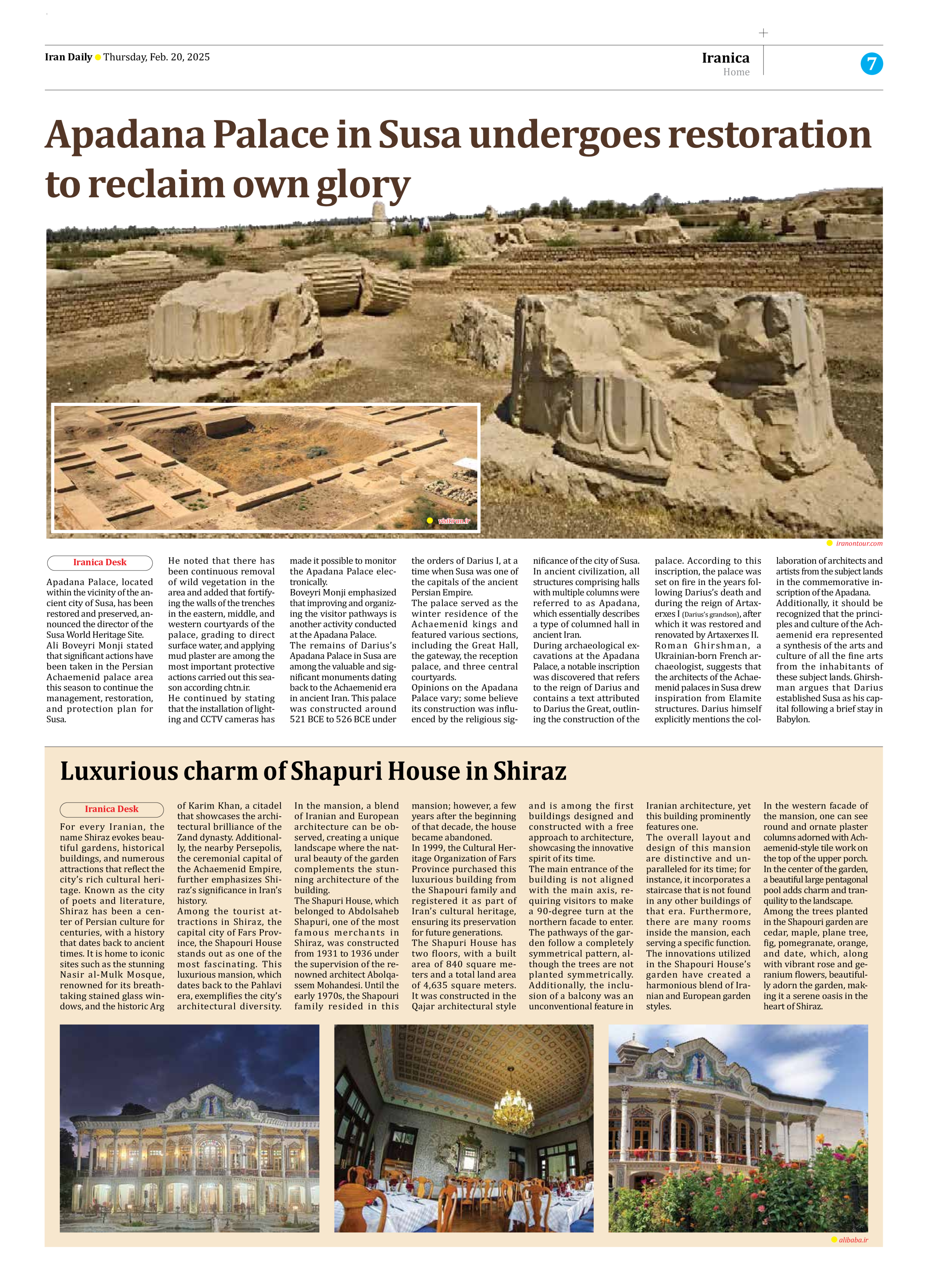
Apadana Palace in Susa undergoes restoration to reclaim own glory
Apadana Palace, located within the vicinity of the ancient city of Susa, has been restored and preserved, announced the director of the Susa World Heritage Site.
Ali Boveyri Monji stated that significant actions have been taken in the Persian Achaemenid palace area this season to continue the management, restoration, and protection plan for Susa.
He noted that there has been continuous removal of wild vegetation in the area and added that fortifying the walls of the trenches in the eastern, middle, and western courtyards of the palace, grading to direct surface water, and applying mud plaster are among the most important protective actions carried out this season according chtn.ir.
He continued by stating that the installation of lighting and CCTV cameras has made it possible to monitor the Apadana Palace electronically.
Boveyri Monji emphasized that improving and organizing the visitor pathways is another activity conducted at the Apadana Palace.
The remains of Darius’s Apadana Palace in Susa are among the valuable and significant monuments dating back to the Achaemenid era in ancient Iran. This palace was constructed around 521 BCE to 526 BCE under the orders of Darius I, at a time when Susa was one of the capitals of the ancient Persian Empire.
The palace served as the winter residence of the Achaemenid kings and featured various sections, including the Great Hall, the gateway, the reception palace, and three central courtyards.
Opinions on the Apadana Palace vary; some believe its construction was influenced by the religious significance of the city of Susa. In ancient civilization, all structures comprising halls with multiple columns were referred to as Apadana, which essentially describes a type of columned hall in ancient Iran.
During archaeological excavations at the Apadana Palace, a notable inscription was discovered that refers to the reign of Darius and contains a text attributed to Darius the Great, outlining the construction of the palace. According to this inscription, the palace was set on fire in the years following Darius’s death and during the reign of Artaxerxes I (Darius’s grandson), after which it was restored and renovated by Artaxerxes II.
Roman Ghirshman, a Ukrainian-born French archaeologist, suggests that the architects of the Achaemenid palaces in Susa drew inspiration from Elamite structures. Darius himself explicitly mentions the collaboration of architects and artists from the subject lands in the commemorative inscription of the Apadana.
Additionally, it should be recognized that the principles and culture of the Achaemenid era represented a synthesis of the arts and culture of all the fine arts from the inhabitants of these subject lands. Ghirshman argues that Darius established Susa as his capital following a brief stay in Babylon.







